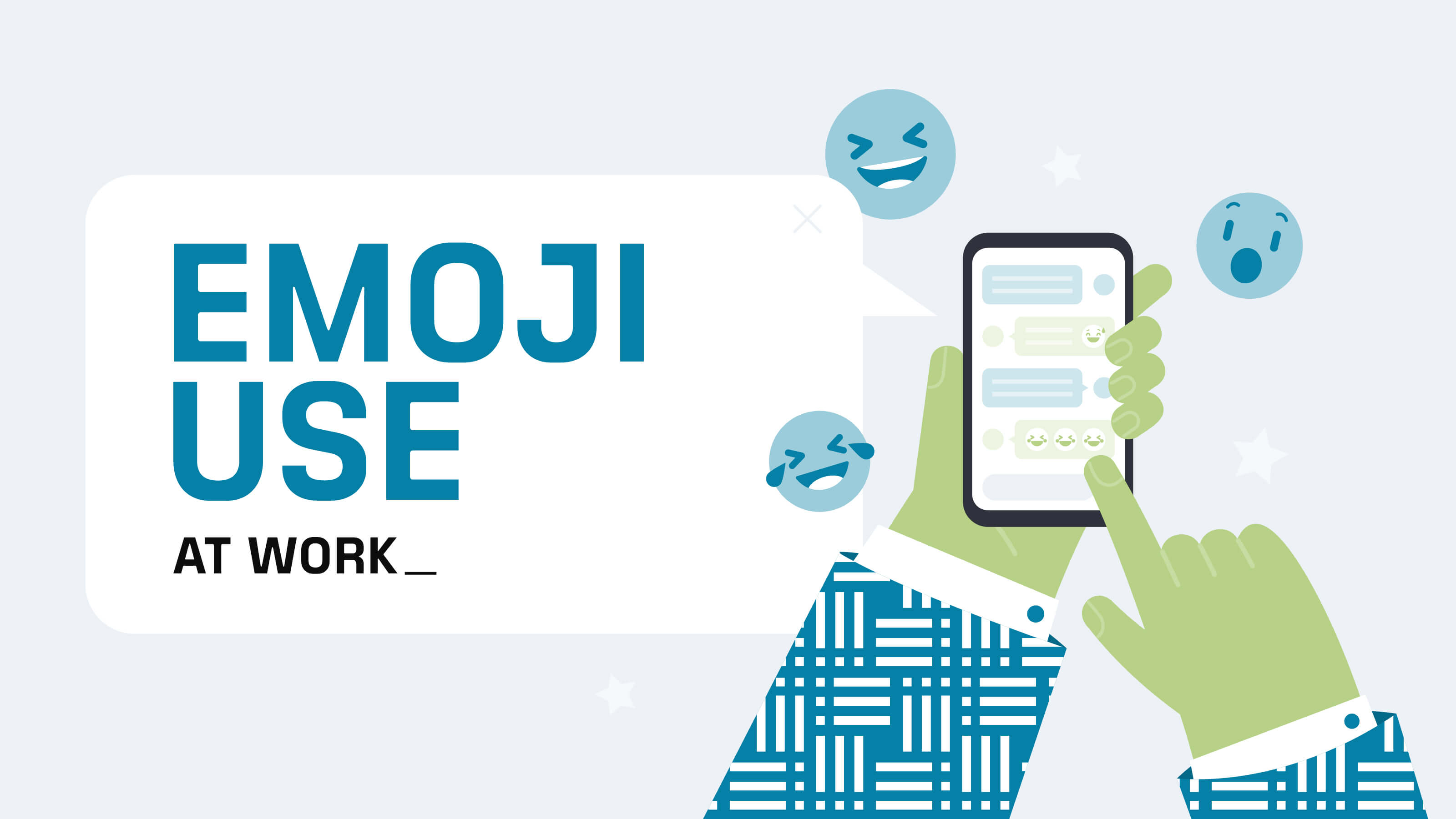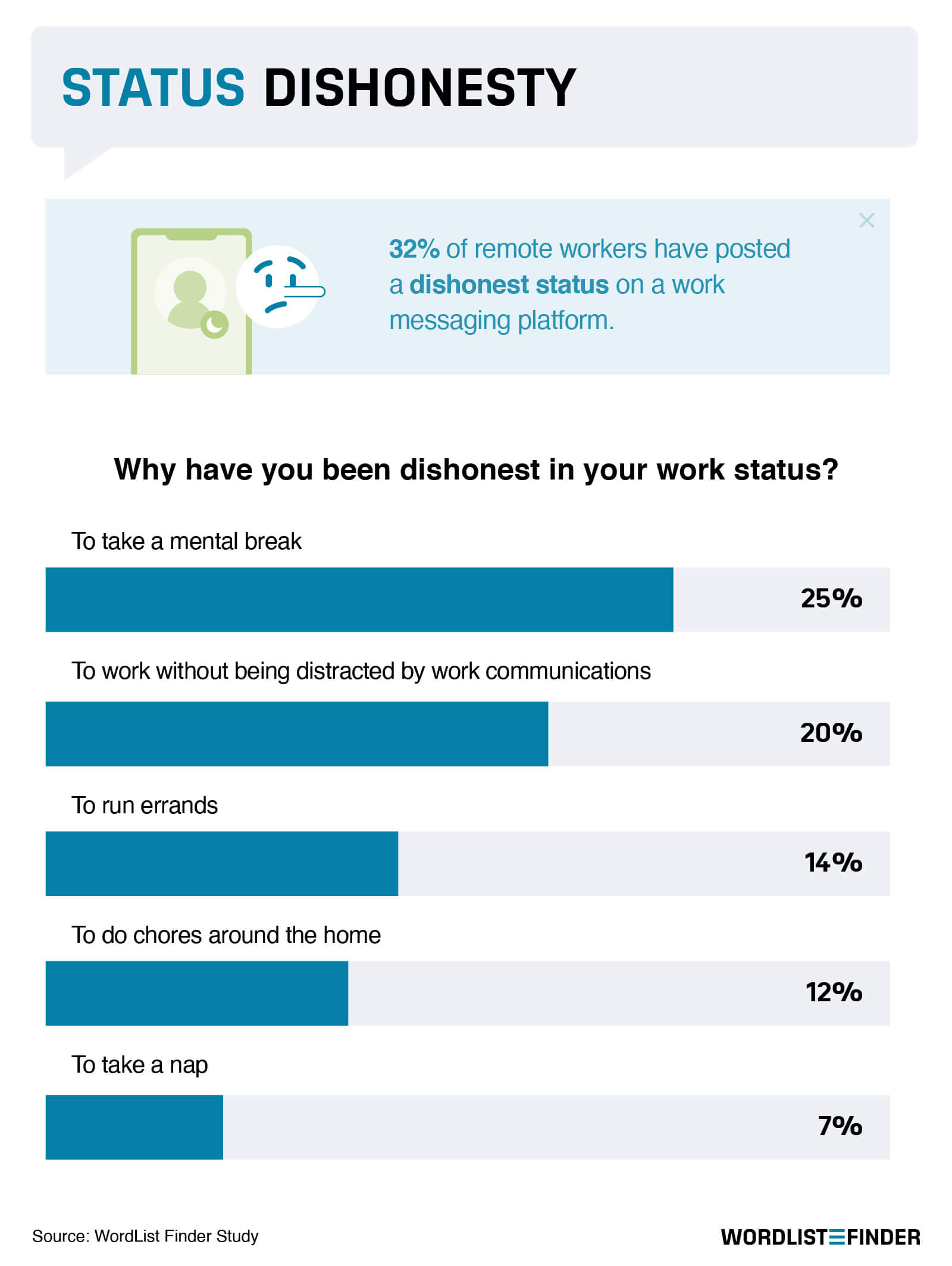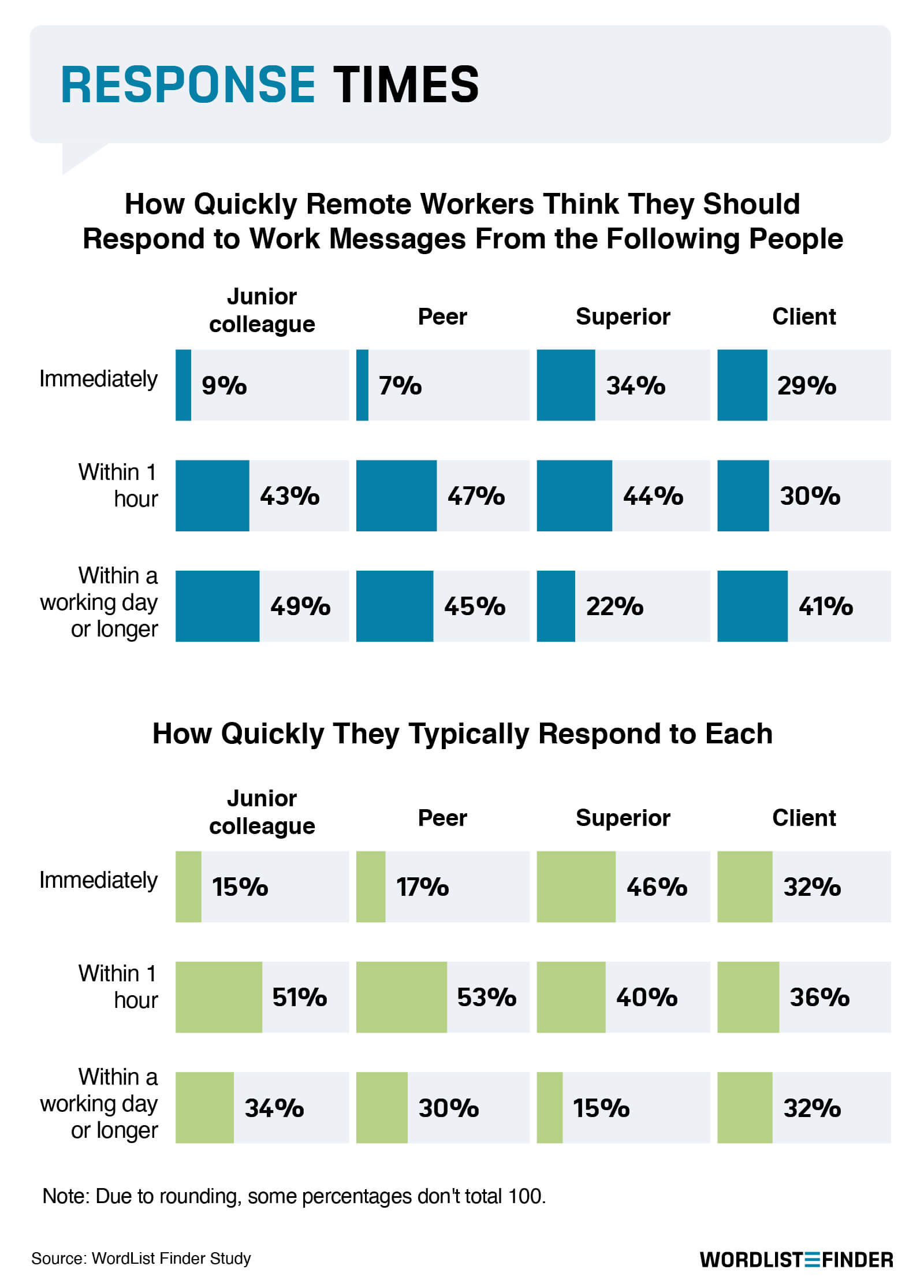The Remote Worker’s Guide to Digital Dialogue

This question led WordList Finder to conduct a survey, reaching out to 1,028 employees who work from home (WFH). We explored the nuances of emoji use in their work communications to uncover patterns in their perceptions. We examined whether emoji should be reserved for fun or if they hold deeper significance in conveying emotions, clarifying messages, or even shaping workplace relationships. Our results reveal the role of emoji in today’s professional communication.
In this article, we’ll unravel our findings to shed light on the colorful world of emoji in the workplace.
Key Takeaways
44% of WFH employees think using emoji in work communications is unprofessional.
WFH employees feel the Beer Mug is the least appropriate emoji for work communications.
Only 8% of managers never message co-workers whose statuses indicate they’re unavailable.
32% of remote workers have posted a dishonest status on a work messaging platform.
Feelings About Work Emoji
Emoji are infiltrating professional communication, prompting a closer look at how these digital expressions are redefining workplace etiquette.

Despite their prevalence in digital dialogues, 44% of WFH employees still viewed using emoji in professional exchanges as unprofessional. This sentiment was especially pronounced among baby boomers, 56% of whom frowned upon their usage. Gender perspectives also varied; women ranked the Eggplant and Peach emoji the most inappropriate choices, whereas men considered the Beer Mug and Kiss Mark emoji the least suitable for work.
Digital natives tend to be more comfortable using emoji than their older colleagues, but there are still some they may want to avoid in the workplace. The Gen Zers we surveyed found the Peach emoji to be the least appropriate for this context, while millennials singled out the Beer Mug, baby boomers pointed to the middle finger, and Gen X said it was the Eggplant. Overall, most respondents agreed with millennials that the Beer Mug should be left out of professional communications.
To Message or Not To Message
Next, let’s look at how remote workers handle messaging availability and their response expectations when co-workers are supposed to be unavailable.

Managing remote teams isn’t always easy, but respecting employees' boundaries is important. However, only 8% of managers and 12% of WFH employees said they exercise restraint by not messaging co-workers marked as unavailable. Could personalizing work statuses be a solution?
When they set their work status to unavailable and still receive messages, remote workers most often reported feeling annoyed (38%). However, some said the messages made them feel needed (21%) and valued (7%).
Co-workers can’t know whether or not it’s ok to message you if you don’t post your working hours. As such, 43% said having your working hours visible in your work communication platform is essential. But nearly as many (46%) shared that frequent messaging has made them less productive.
This suggests a possible correlation between remote work and reduced productivity. Stress might compound the issue, since 26% said new work message pings make them anxious. A contrasting 12% of respondents have found that work messaging boosts their output.
Remote Work Transparency
The flexibility of remote work brings with it a debate over status honesty, challenging the transparency of digital professionalism in the WFH era.

Protected by the honor system of remote work, 32% of employees admitted to not always being honest in their work status. Most often, it was so they could take a mental break or work without distractions. Could this lack of virtual work environment transparency also highlight a struggle among employees to balance work and personal life? At least the chances of getting caught were slim: only 8% were discovered.
The Timeliness of Virtual Interactions
These digital correspondence response times may reflect the unwritten protocols of remote workplace communication.

Response time expectations were the tightest for messages from superiors, with 34% of respondents feeling they should send them an immediate reply. But 44% said waiting up to one hour to respond should be fine. However, conversations with junior colleagues and peers showed a bit more flexibility, often not requiring a response until the end of the workday. These communication patterns reflect professional courtesy as well as the nuanced power dynamics that govern the remote work ecosystem.
Beyond the Smiley Face
As we’ve examined the nuances of emoji use, response times, and status honesty in the remote workplace, it’s clear that the digital revolution has brought about a new set of etiquette and expectations. From the varying views on emoji appropriateness across generations and genders to the various response times expected depending on workplace hierarchy, these insights highlight the need for clear guidelines and understanding in our virtual interactions. Empathy, adaptability, and respect for boundaries remain crucial to a healthy workplace culture in the ever-changing world of remote work.
Methodology
WordList Finder surveyed 1,028 WFH employees about their emoji usage in work communications. Of them, 54% were women, 44% were men, and 2% were non-binary; 13% were Gen Zers, 55% were millennials, 8% were baby boomers, and 24% were Gen Xers.
About WordList Finder
WordList Finder offers a robust word generation tool that’s perfect for educators, writers, and students looking to craft comprehensive vocabulary lists. Our vast database lets you confidently create word lists for any purpose, from academic enhancement to creative writing or even 5-letter Wordle words.
Fair Use Statement
Should your audience be navigating the intricacies of remote workplace communication, feel free to share these insights for any non-commercial purpose. We ask only that you attribute the source with a link back to this page, ensuring access to our comprehensive data and methodology.
